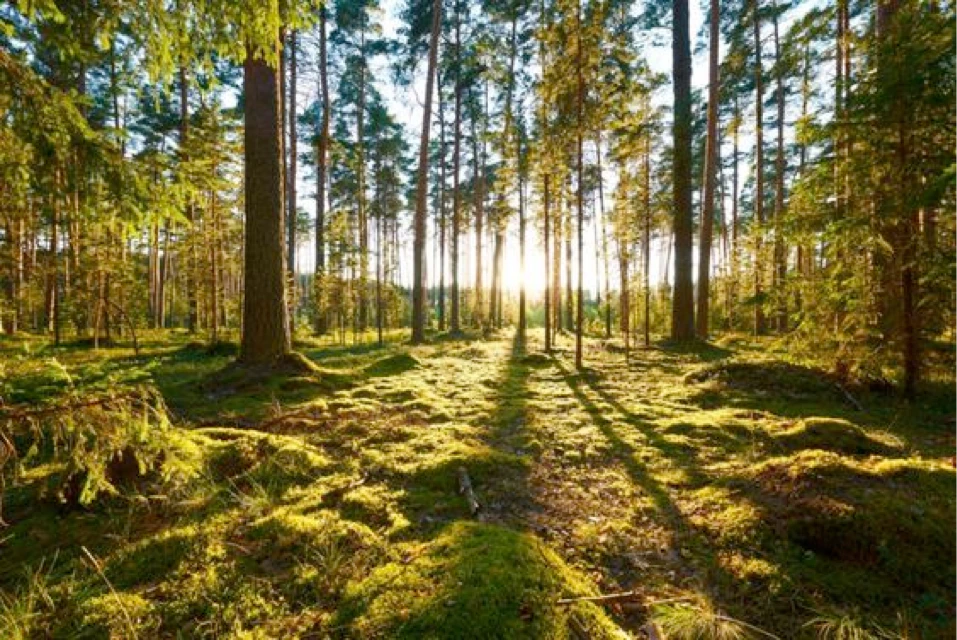Measuring, Reporting, and Verification of Forest Restoration
1.3 Monitoring design

Monitoring is essential to determine whether we can be confident restoration objectives are likely to have been achieved, and to provide learning opportunities in an adaptive cycle, but the range of questions that can be answered, and the confidence with which we can disregard alternatives is strongly linked to the design of the monitoring itself, as well as the intensity of the recording effort.
The appropriate sampling design and statistical considerations will be specific to location and ecosystem, but there are some common considerations for new practitioners.
Construction of reference models
A reference model is fundamental to understanding what condition and status we expect the ecosystem to take at a particular time, including intermediate steps during the trajectory from degraded baselines to mature restored habitat. Reference models can also be constructed to represent just the variation expected in properties of mature habitats, and all other sites are judged by their similarity to that reference state. However, given restoration of most ecosystems is a long process, and a reference model that predicts the variation of properties expected for projects after every decade for example is a necessity to support and guide adaptive management.
To characterise the form and variability of ecosystems at different stages of the trajectory, reference sites need to be selected across a range of ages that capture the range of natural variability that occurs among sites, but robustly reflect the potential capacity of restoration sites. Ideally, the abiotic environmental conditions of the sites will approximate the potential indicated by baseline surveys at the restoration site, and reference sites should be selected to minimise further abiotic variation among locations that will become confused with the chronological sequence. Construction of reference models should ideally incorporate a broad set of ecosystem attributes described in the previous section, such that in effect there are reference expectations for each attribute.
Even within the same habitat type there will be inherently variation among sites, and there may be multiple trajectories of restoration succession based on chance events such as natural disturbances or order of arrival of species. Inventory of one site will capture only a fraction of the species pool and be unlikely to represent the average condition of the target ecosystem. To define the expected range of ecological properties, more reference sites will need to be surveyed to characterise highly heterogeneous systems as compared to more homogeneous forests. Thus, if new restoration projects are to be judged on whether they fall within an acceptable range of expectations, it is important expectations do not significantly change when further reference sites are included in the model. It is therefore important to appreciate that reference models typically require many sites to be characterised in order to describe the different stages of the trajectory.
Adequate investment in developing a reference model is an important consideration in project planning and budgeting. The quality of the reference model will vary among projects, based on project resources and available sites and information. While it is expected most project managers will have use their professional judgment to navigate gaps in the information available, the best available information should always be combined to develop an optimal model for predicting reference system condition.
Site monitoring design
Monitoring to evaluate restoration outcomes begins at the planning stage by developing a monitoring plan to identify treatment impact. Monitoring designs can be divided into two general forms: “before-after” (BA) or “before-after-control-impact (BACI). To detect change associated with restoration actions, the ecosystem attributes must be compared before and after the work is accomplished. If differences are observed, these suggest the actions to manage the site had an effect, although we cannot say for sure this change may not have happened in the absence of restoration funding. From this information alone, we also cannot judge how successful the change has been without a reference model to compare against. In contrast, BACI designs help determine which differences were the result of restoration effect above and beyond natural temporal variation, or background rates of landcover transition in the landscape. BA designs are cheaper to implement, but also less likely to reliable detect differences, or to quantify the amount of change accurately (Christie et al. 2019).
Within a BACI framework the sampling design will be determined by spatial and temporal heterogeneity of the ecosystem attributes (see previous section), as well as the likelihood of measurement and detection error, to ensure valid and reliable results. Greater spatial heterogeneity requires more frequent or denser sampling to capture variability and for this to be stratified to avoid spatial bias. Similarly, infrequent or inconsistent temporal repeats may coincide with seasonal or interannual fluctuations that obscure restoration signals. In some cases, meaningful response variables that are cheap and easy to monitor are hard to identify and surrogate variables may have to be used, particularly when attempting to design sampling schemes that serve many properties simultaneously. This is often a problem with restoration objectives targeting specific wildlife for which proof of successful establishment and breeding in the restored habitat is desired, but presence/absence or relative abundance measures are used as a surrogate. Likewise direct measures of forest functions like nutrient cycling, carbon sequestration, or trophic interactions are often complex, time-consuming, and expensive to assess (e.g. Plat et al. 2024). In contrast, structural attributes—e.g., vertical canopy complexity, basal area, or leaf area index—are easier to quantify and have positive correlations with ecological processes such as primary productivity, microclimatic regulation, and faunal diversity. Nevertheless, these associations are not so strong that all other restoration objectives can be inferred solely from structural attributes, and hence they are suitable when included in combinations with indicators of other attribute categories.

